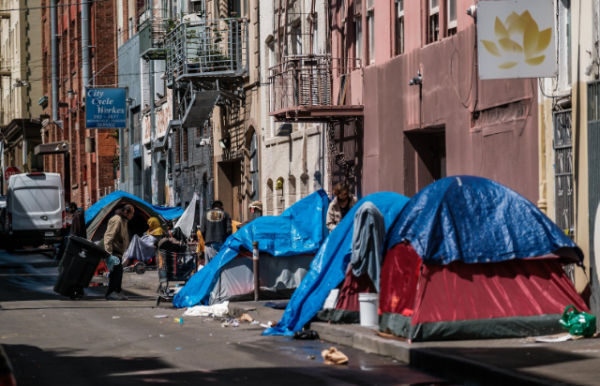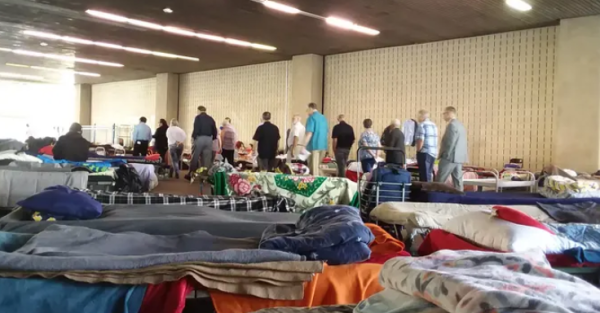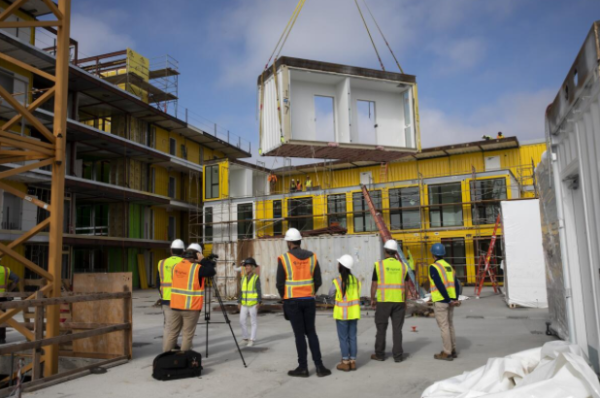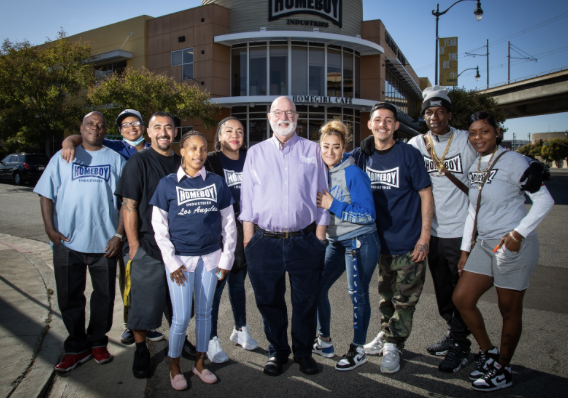In the last decade, California’s unhoused population has skyrocketed—increasing 43% and now accounting for 30% of the United States’ homeless population. Currently, there are more than 170,000 citizens forced to live on the streets simply because they cannot afford the soaring rent and mortgage prices plaguing California’s housing market.
As of 2023, California has the highest rent prices of the entire United States—with the median price tag being $800,000—around $85,000 more expensive than Hawaii, which is second on the list. The costs are so high that only 15% of Californians could even comfortably afford to buy or rent a home in the last quarter of 2023.

This drastic rise in housing costs can largely be attributed to the lack of increasing housing supply to meet population demand. In the last ten years, California’s population has increased by 2.4 million people, while the supply of housing has stagnated.
California’s Department of Housing estimates that to keep up with demand and ensure stability in prices, the state needs to build an average of 180,000 housing units per year; however, over the past decade, California has barely managed to build even half of that.

The slowdown in construction is mostly due to the fact that building housing is exponentially more difficult in California as compared to other states. Not only is purchasing the land more expensive in California, where land constitutes 12% of the total construction cost as compared to 5% in other states, but the complexity of financing affordable housing projects disincentivizes contractors from building units for low-income citizens.

With the cost of housing soaring across the state, homelessness has proportionally increased with many Californians struggling to purchase new homes or remain in their current ones. Since the Covid-19 pandemic, the state’s homeless population rose by 6% even as the state’s economy staggered to recover. While many attempt to present the homeless crisis as a result of individual failings—like substance abuse—the rising cost of rent continues to be the most significant factor: rent dramatically outpacing wages is to blame with 55% of Californians spending a disproportionate share of their income on housing.
Instead of attempting to address homelessness as a social issue, different parts of California have resorted to criminalizing homelessness to the greatest extent possible, making it difficult for homeless people to simply exist in public spaces.

Localities have often segregated homeless people by forcing them into inhumane shelters on the outskirts of cities to prevent them from being seen in public. Homeless people are often the targets of government violence, being brutalized by the police and incarcerated for crimes that would otherwise be considered minor.
With people experiencing homelessness being 11 times more likely than the general population to be arrested, the criminalization of homelessness fuels the issue of mass incarceration with more being forced into already overcrowded jails. The impacts of this are devastating: homeless people are forced into a cycle of poverty, in which they are forced into prisons and are denied basic services once released.
As a result, 43% of people currently experiencing homelessness were previously incarcerated. Many find themselves left on the streets only to be imprisoned and then left on the streets once more, foreclosing any possibility for future mobility.

The criminalization of homeless communities also increases social and societal stigma surrounding their existence. In fact, 85% of Californians are worried or concerned about homeless people even being present in their neighborhoods. This “otherism” that stems from the belief that homeless people are like animals—creatures to be “worried about,” directly leads to increased violence towards homeless populations.
In Los Angeles, homeless people account for nearly 25% of homicide victims, despite only making up 1% of the population. These attacks that disproportionately affect homeless communities are charged by anti-homeless sentiment, or the view that the homeless are “below” those housed—thereby undeserving of civility or safety.

Despite the massive scale of the crisis, hope remains as the government looks towards new policies to address the homeless crisis. The current administration recently announced $180 million in grants to create new housing units, a step to resolving the massive imbalance between supply and demand for housing.
Some proposed actions would go even further, particularly a new proposed amendment to the California state constitution which would declare housing a human right. If passed, the California government would be obligated to ensure that every citizen has some form of adequate housing, no matter their social class. Polling finds that 66% of Californians support this amendment, demonstrating the clear desire for social change.

While government action has often been insufficient, charitable organizations are also beginning to play an essential role in addressing the crisis of homelessness, particularly the issue of criminalization. A significant example is Homeboy Industries, which has focused on rehabilitating formerly incarcerated individuals, attempting to provide them with the opportunities that they are often denied.
are also beginning to play an essential role in addressing the crisis of homelessness, particularly the issue of criminalization. A significant example is Homeboy Industries, which has focused on rehabilitating formerly incarcerated individuals, attempting to provide them with the opportunities that they are often denied.
The organization has recently begun expanding its operations to create new transitional housing for its members, 75% of whom are homeless. By doing so, Homeboy Industries is attempting to provide those unable to participate in the housing market with the stability necessary to turn their lives around.
Over the last ten years, California’s homelessness crisis has only continued to increase—pushing citizens out of housing and inflating housing prices to be unaffordable for nearly 85% of California’s population. Although current legislation is being discussed to alleviate the impacts of homelessness, California has funneled billions of dollars into the homelessness crisis each year—each with no avail, leaving the heavy lifting to citizen-led organizations like Homeboy Industries. Yet, as for today, whether or not Governor Newsom will actually manage to address California’s homelessness epidemic head-on remains to be seen.


